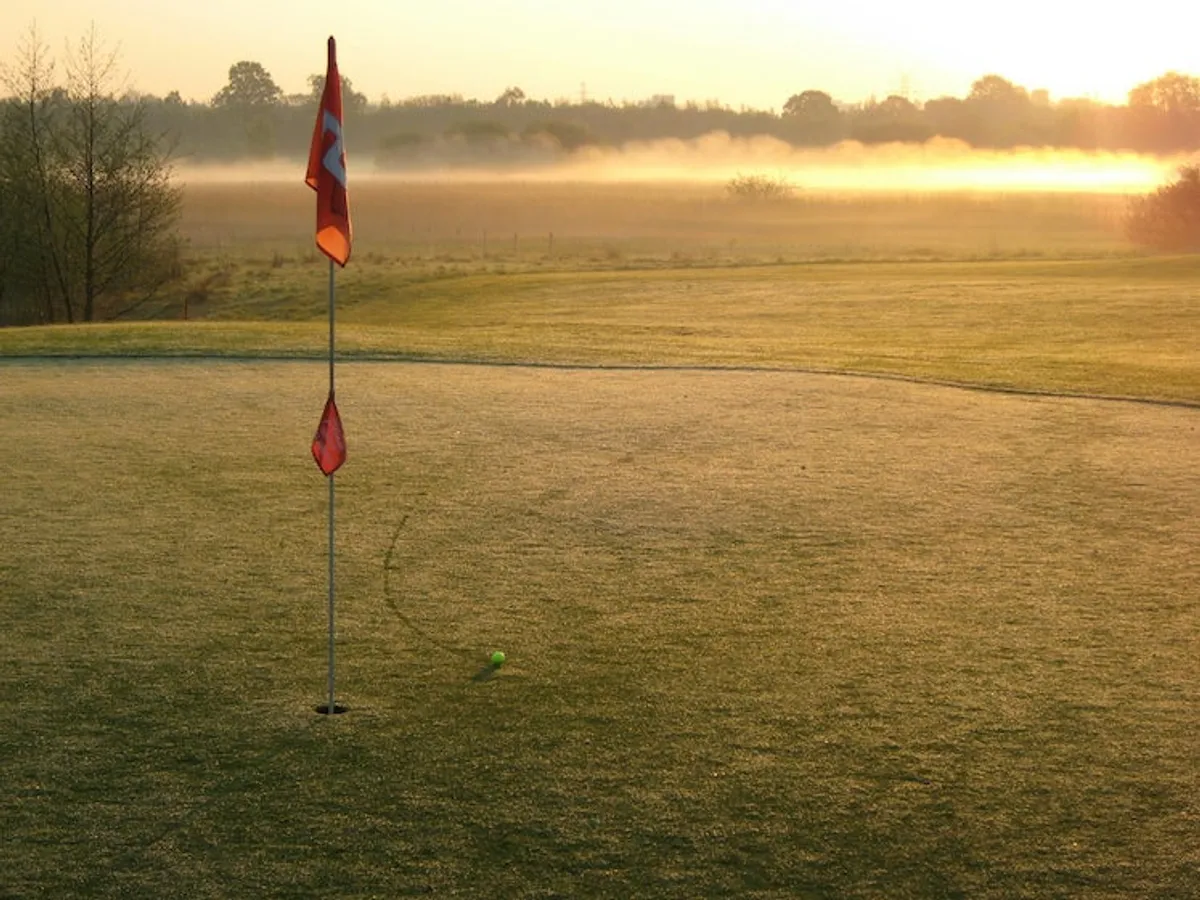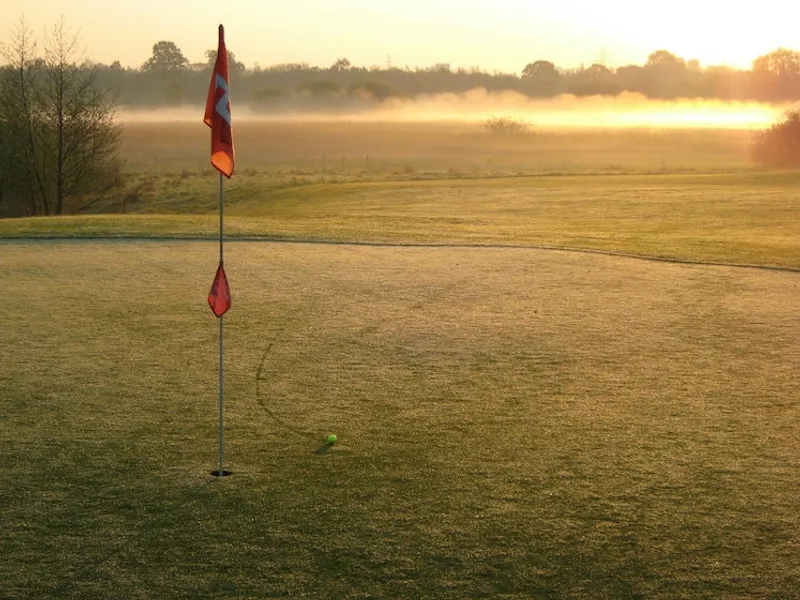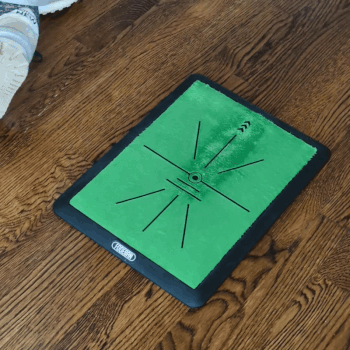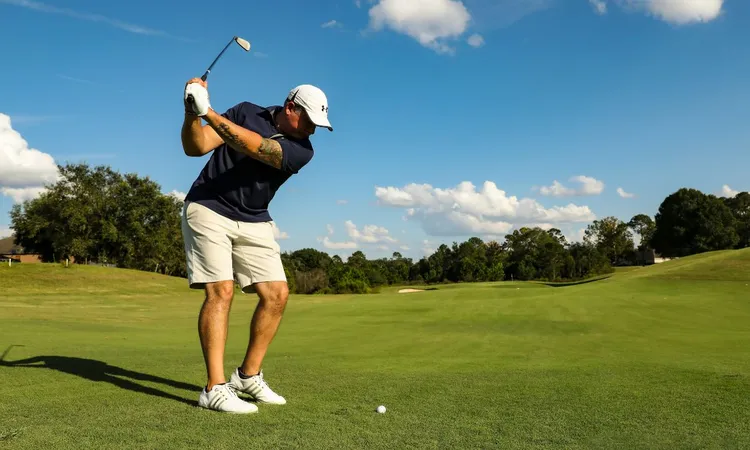An over the top swing in golf refers to a downswing path where the clubhead veers outside the target line before cutting back across the ball. In contrast, an efficient, properly executed downswing follows an inside-square-inside path, approaching the ball from the inside, squaring up at impact, and continuing smoothly through the shot. The over the top motion disrupts this natural flow and seeks to cut across the ball, often resulting in erratic flight and inconsistent contact.
Golfers who struggle with this issue notice that off-target shots become more frequent and difficult to control. Because the clubface meets the ball from an outside angle, it is harder to square up at impact, making mishits and spins more likely. By understanding the specific problems it causes, the key mechanics behind it, and the corrective steps needed to address it, golfers can work toward developing a more reliable and consistent swing.
Common Faults Resulting from an Over the Top Swing
Many golfers find that an over the top swing immediately reveals itself in the shape of the shot and the inconsistency of ball contact. Because the club approaches from an outside-in path, it can impart excessive sidespin or cause the face to close too hastily. Below are the most common ball flights and misses that arise when the swing path strays off course.
Slices
When coming from the outside, the clubface often lags behind and remains open at impact. This open face produces a strong sidespin on the ball, curving it drastically to the right for right-handed players. The slice is especially frustrating off the tee, as it reduces both distance and accuracy, often leaving golfers fighting to keep the ball in play.
How to Fix Swing Flaws From Home Without a Coach or Expensive Gadgets
Struggling with thins, fats, slices—or just can’t tell what’s going wrong?
This swing mat shows you exactly how your club strikes the ball, giving instant visual feedback after every shot. With just a few swings, you’ll start spotting mistakes in your swing path that are otherwise invisible.
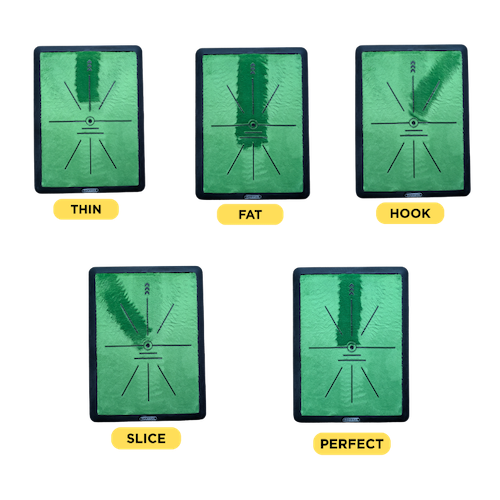
It’s a quick, low-hassle way to connect what you feel in your body with what’s really happening at impact.
Use it indoors or out, no ball required—just swing and learn. It’s one of the fastest ways to improve your swing right from home.
Pulls and Hooks
Although the classic over the top miss tends to be a slice, pulls and hooks can also result. In some cases, a hurried or compensating motion causes the clubface to close earlier through impact, leading to shots that fly left for right-handed golfers. Whether it’s a pull that starts left and stays left, or a hook that curves uncontrollably left, these outcomes undermine consistency and confidence, making it difficult to predict how the ball will behave off the clubface.
Mechanics Behind the Over the Top Swing
The golfer’s body and swing mechanics are highly interconnected, and slight faults in technique can compound to produce an outside-in path. By understanding which key elements encourage the club to stray from its ideal inside route, players can diagnose where their own swing may be going wrong.
Improper Wrist Positioning
Correct wrist action allows the clubface to stay on plane and maintain its angle into the downswing. When the wrists release too early or do not hinge properly, the club loses the angle formed during the backswing. This early breakdown sends the club outward, making the transition into the downswing more difficult to manage. The loss of a firm wrist set can shift the downswing path, pushing the club far outside the target line before it ever reaches impact.
Insufficient Body Rotation
A fluid golf swing hinges on the synchrony of hips, torso, and shoulders. When players fail to rotate adequately, the arms often take on extra responsibility to generate power. This over-reliance on the arms disconnects the club from the proper path, as the shoulders tend to dominate and drive the club from the outside. A more balanced rotation, in which the lower body initiates and the upper body follows, helps preserve the inside route and prevents compensations that lead to an over the top swing.
Lifting the Right Elbow
At the top of the backswing, the right elbow (for right-handed golfers) should remain in a stable, tucked position. If it flares outward, it promotes an unwieldy downswing path by creating separation between the arms and torso. Once the elbow lifts, it becomes harder to slot the club from the inside, making an over the top move much more likely.
Overactive Right Shoulder
Another common culprit is an overly aggressive right shoulder during the transition. Instead of sharing the load with a proper hip turn, the right shoulder forces the club downward and across, overriding the body’s natural feel for a more rounded, inside path. This domineering shoulder action pulls the arms externally, causing the club to sweep in from an unwieldy outside angle.
Drills and Adjustments to Correct the Swing
Correcting an over the top swing involves making small but consistent tweaks to posture, rotation, and coordination. By focusing on specific aspects of your technique and practicing purposeful drills, you can guide your swing toward a smoother, inside path that delivers greater power and precision at impact.
Refine Your Setup
Begin by carefully checking posture and alignment. The feet, hips, and shoulders should be parallel to the target line and balanced over the balls of your feet. A proper address helps the club track more naturally from the inside as it starts back and transitions forward. Even a small improvement in setup can offer immediate feedback on the direction of your initial takeaway.
Build a Consistent Wrist Hinge
Pay attention to how your wrists set during the initial stage of the backswing. By forming a stable “L” shape, you preserve the angle that will help the club remain on plane. Avoid letting your wrists unhinge or collapse too early, since that forces the arms to reroute the club outside before the downswing begins. Perfecting this element in front of a mirror is a quick way to see whether the club is traveling in the right slot.
Cultivate a Full Body Turn
Spend time working on smooth, connected rotation in your hips and torso. The body’s core should lead the swing motion, allowing the arms and shoulders to follow in harmony. When the lower body shifts into the downswing first, the arms and club have a better chance of slotting from the inside. Simple rotational drills, performed slowly, reinforce this timing and help prevent shoulder over-involvement.
Keep the Right Elbow Tucked
Place a headcover or small towel under your right armpit during slow practice swings. This training aid reminds you to keep the elbow close to your side, preventing it from floating upward and forcing the club onto an outside path. By maintaining connection between your torso and arms, you stay more compact and can deliver the club from a powerful inside route at impact.
Initiate the Downswing with Your Lower Body
Devoting attention to how the downswing begins is crucial. When the lower body leads the transition, the upper body remains relaxed and follows the established plane. Working on small, half-swings where you gently shift weight onto your front foot before letting the shoulders turn can produce a more fluid and connected downswing. This adjustment helps guide the arms correctly and reduces the risk of an over-the-top maneuver.
Use Visual Guides for Alignment
Consider placing alignment sticks on the ground to illustrate the target line and an inside path zone. By positioning a stick a few inches outside your stance, you create a corridor that the club should navigate. Seeing these visual cues gives immediate awareness if your clubhead veers to the outside. The more you train in this corridor, the more naturally the club will begin to shape its flight from the inside.
Practice Slow-Motion Swings
Adopting a slower swing speed in practice enables you to observe how your wrists, elbows, and shoulders sequence through the downswing. This deliberate tempo reveals any tendency to cast the club away from the body or prematurely straighten the trail arm. Over time, rehearsing a fluid, balanced move at reduced speed layers muscle memory that steadily translates into a consistent full-tempo swing.
Gradually Integrate and Increase Tempo
Once comfortable with these mechanical changes, start lengthening your swing and accelerating in measured increments. Begin with half-swings and advance to three-quarter motions, then progress to a full swing at normal speed. This incremental build-up ensures that each swing element—from setup to wrist hinge, from rotation to elbow tuck—remains intact as you add power. By returning to slow-motion drills whenever something feels off, you reinforce a fundamentally sound motion while erasing the old habit of cutting across the ball.
Conclusion
An over the top swing occurs when the club travels on an outside-in path, disrupting the natural sequence of the downswing and producing erratic shots. Common issues that arise include slices, pulls, and hooks—all rooted in faulty mechanics like early wrist breakdown, insufficient body rotation, a lifted right elbow, or an overactive right shoulder.
Devoting attention to setup, wrist position, and lower body activation provides a foundation for a more efficient swing plane. By training through alignment aids, slowed-down practice, and incremental tempo increases, you can replace the ingrained over the top habit with a controlled, inside route. With focused repetition and ongoing awareness, these adjustments offer the path to more consistent contact and greater accuracy on every shot.
